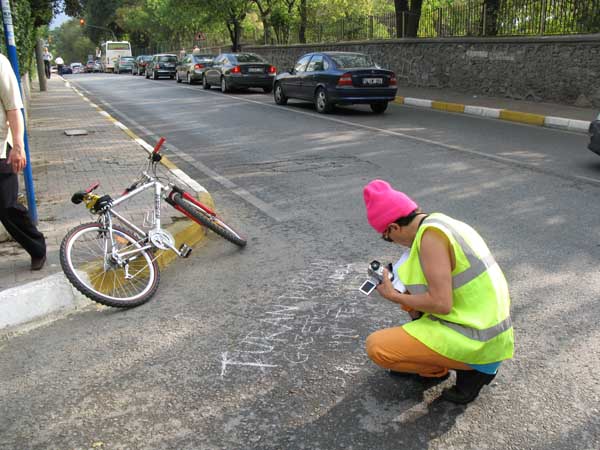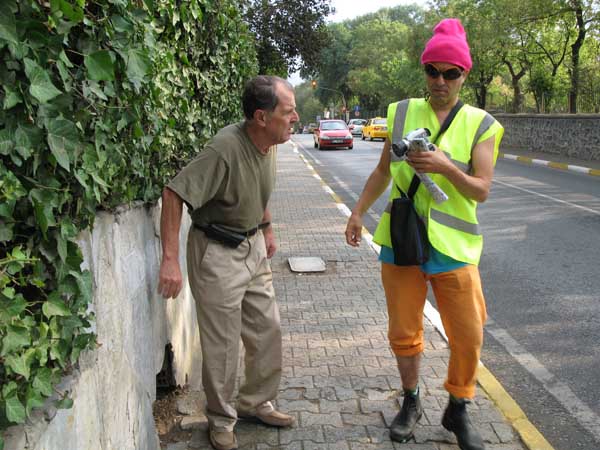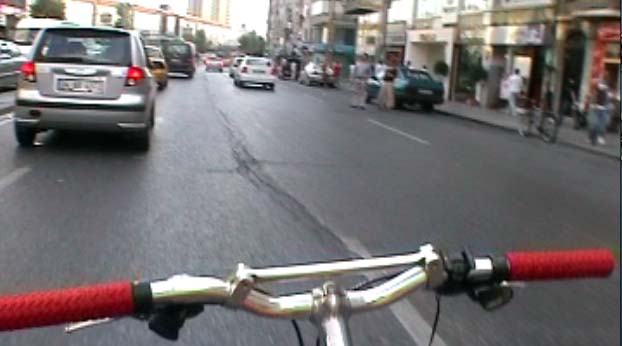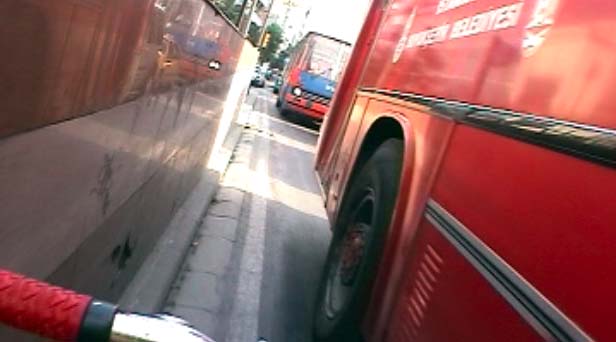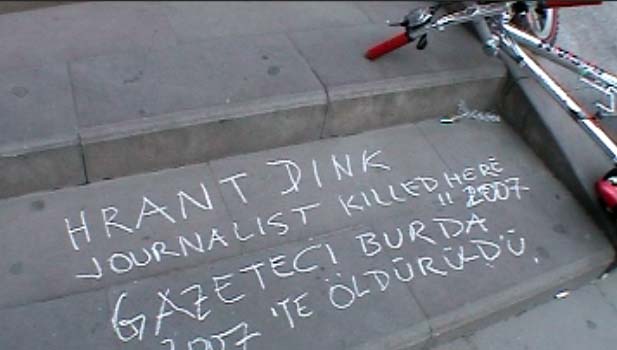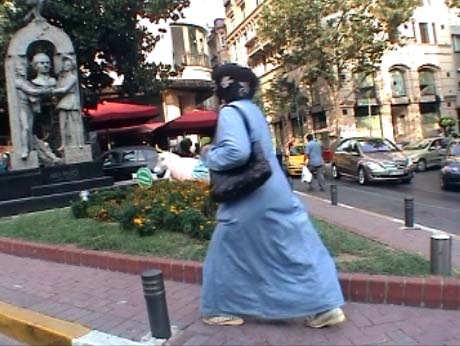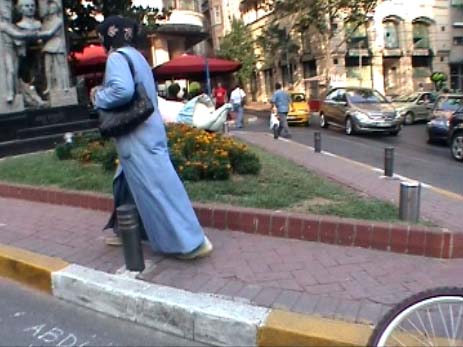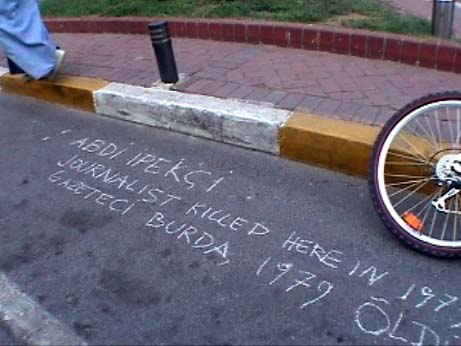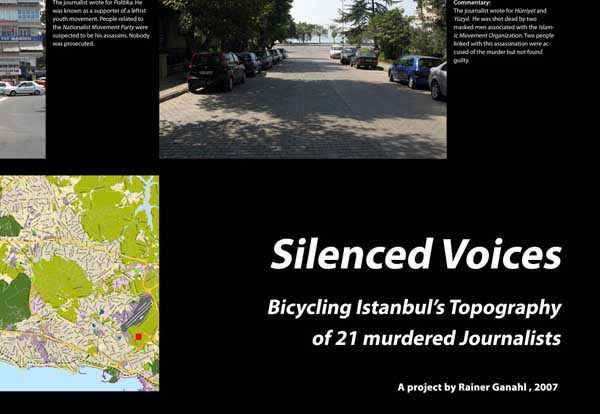
Silenced Voices – Bicycling
Istanbul’s topography of 21 murdered Journalists
For this program I bicycled between 21 sites where journalists were killed,
their voices silenced. I videotaped this bicycle ride thus outlining the
topography of tragic murders in memoriam of these journalists. Journalists
are more and more the target of brutal silencing in today’s global
war theaters. Unfortunately journalists are being killed everywhere, by
Russian as well as by American troops, by Islamists extremists as well
as by international crime cartels throughout the world.
Opposite to other bicycle projects of mine where I transgress the traffic
rules and endanger myself, in my Istanbul rides the emphasis is on mapping
and the historiography of these not so public and generally repressed
stories. In our research we came across a university student who told
us that his professor was rejecting a proposal for a research paper on
murdered Istanbul journalists. According to the Committee to Protect Journalists,
Turkey lists as the eights most difficult country in the world to practice
journalism. At one point, while I was marking with chalk the name of the
journalists and other basic information, surrounding people called for
the police. The police arrived and questioned me before they wanted to
take me to the police station. I was told that “the sentence “(“journalist
killed here in 1996”) was “false” and that writing on
the street floor was “forbidden.” Only when I was able to
show them my Biennial pass, they let me go with some threats.
Bicycling between these marked sites – two had to be accesses by
car since the distances exceeded 20 km – was an interesting experience
and produced a specific picture of the city bringing me across a big variety
of communities with remarkable economic, social, architectural, cultural
and historical differences. But given the specific task this cityscape
is not about an orientalizing, touristic panaroma of Istanbul but to connect
and memorialize the murders of these journalists with this bicycle ride.
On several occasions, while I was inscribing with chalk the name, the
profession and the year of the assassination of these journalists on the
floor of each site, little discussions occurred in which I was asked to
explain the project. In return I was also offered personal account of
the events. Some people remembered the tragedy, were even present and
saw the victims. The journalists remembered here are from all variations
- from the left, from the right, secular and religiously oriented, etc.
- and no selection has been made.
Last but not least I would like to point out that Istanbul is very bicycle-unfriendly.
For example I have not come across any bicycle lanes except at the seaside.
Cars drive aggressively and lack respect for bicyclists. In the late 19th
century bicycles were the first modern vehicles to bring mobility at no
cost. Velo-mobility was a modernist project that has not lost any of its
utopian energy since it offers a vision on how to skip oil dependency,
pollution and counter obesity and global warming. Sooner than later, urbanists
and city policy makers have to block fuel burning traffic from entering
most affected areas and redesign our cities around solutions for transportation
that will privilege bicycles over car driving.
Rainer Ganahl, Istanbul, September 2007
Research/Sources:
The research was done by Sirin Tabanli, Murat Alat, Orhan
Tüleylioglu (Ugur Mumcu/Association of Journalistic Research) and
the Turkey
Organization for Journalists. We consulted Alpay Kabacali, Political
Murders in Turkey between “Tanzimat/reform” (1826) and “March
12th” (1971); Hifzi Topuz, Turkish Press History, Edition Remzi
2003; various daily newspapers (Cumhuriyet, Hürriyet, Milliyet, Aksam)
from
the archives; and numerous internet sites.
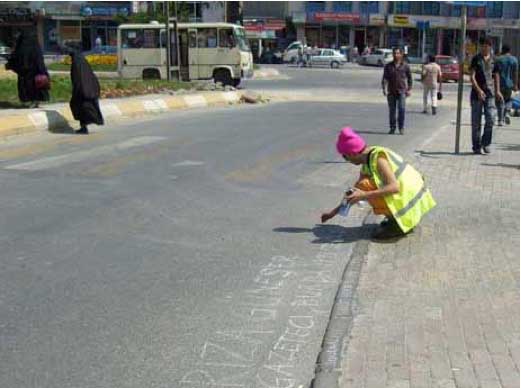
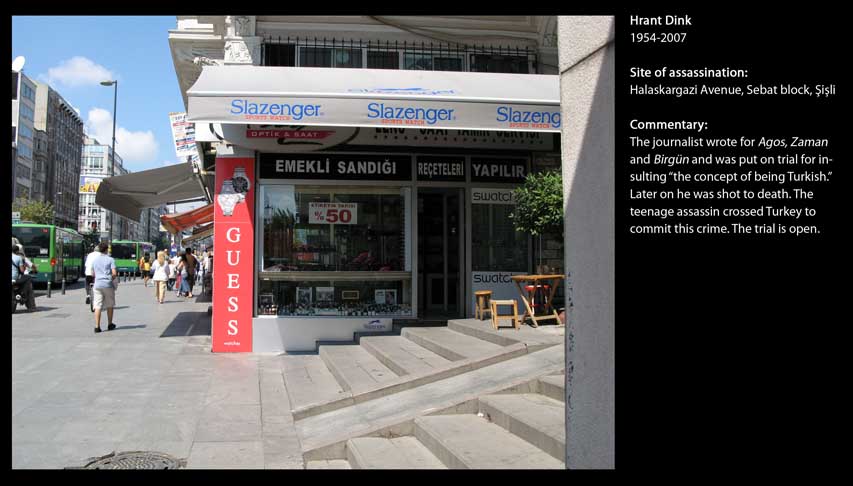




video stills to come


